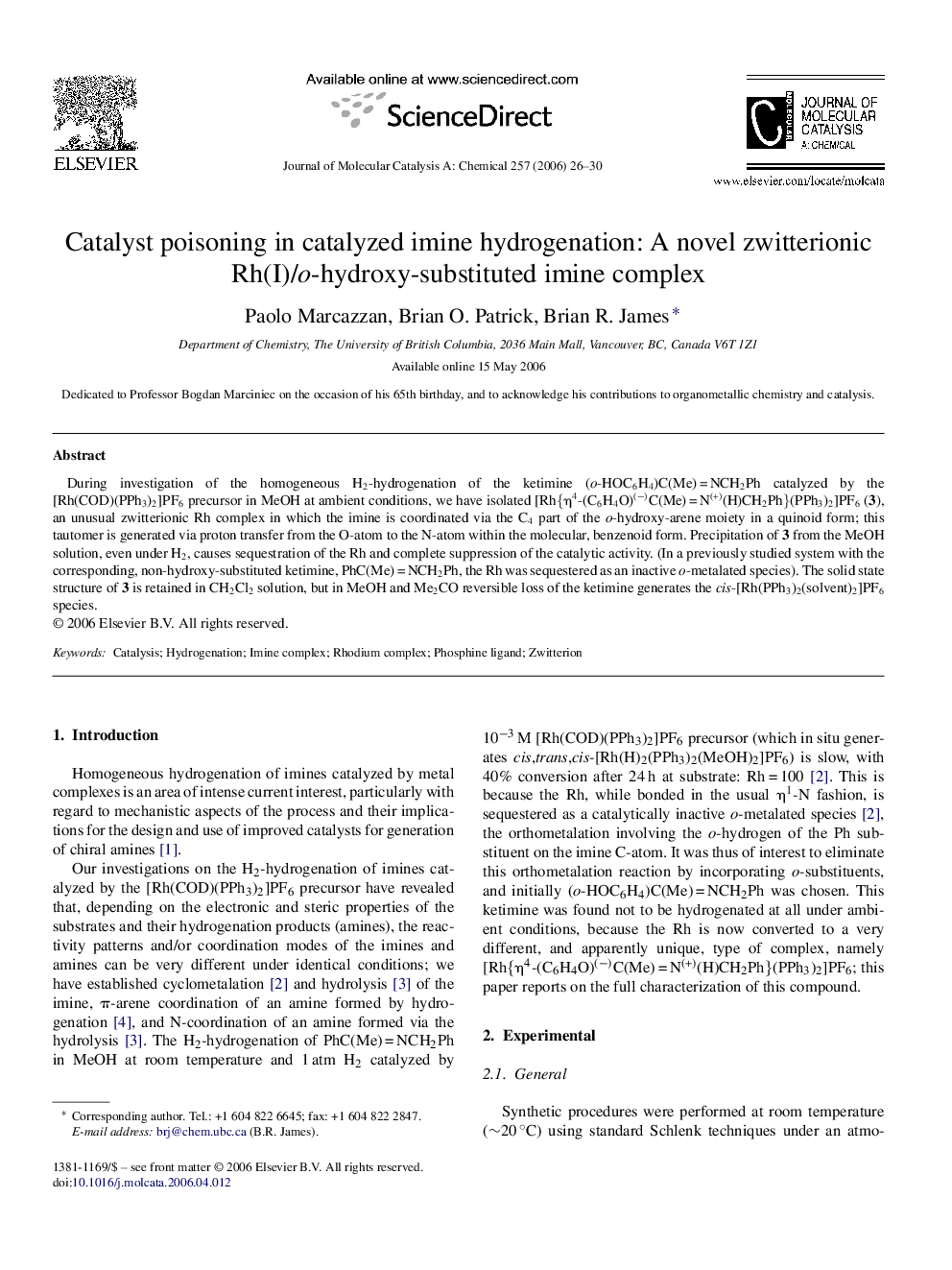| Article ID | Journal | Published Year | Pages | File Type |
|---|---|---|---|---|
| 68643 | Journal of Molecular Catalysis A: Chemical | 2006 | 5 Pages |
During investigation of the homogeneous H2-hydrogenation of the ketimine (o-HOC6H4)C(Me) = NCH2Ph catalyzed by the [Rh(COD)(PPh3)2]PF6 precursor in MeOH at ambient conditions, we have isolated [Rh{η4-(C6H4O)(−)C(Me) = N(+)(H)CH2Ph}(PPh3)2]PF6 (3), an unusual zwitterionic Rh complex in which the imine is coordinated via the C4 part of the o-hydroxy-arene moiety in a quinoid form; this tautomer is generated via proton transfer from the O-atom to the N-atom within the molecular, benzenoid form. Precipitation of 3 from the MeOH solution, even under H2, causes sequestration of the Rh and complete suppression of the catalytic activity. (In a previously studied system with the corresponding, non-hydroxy-substituted ketimine, PhC(Me) = NCH2Ph, the Rh was sequestered as an inactive o-metalated species). The solid state structure of 3 is retained in CH2Cl2 solution, but in MeOH and Me2CO reversible loss of the ketimine generates the cis-[Rh(PPh3)2(solvent)2]PF6 species.
Graphical abstractThe ketimine (o-HOC6H4)C(Me) = NCH2Ph reacts with [Rh(COD)(PPh3)2]PF6 in MeOH at ambient conditions to precipitate the complex [Rh{η4-(C6H4O)(−)C(Me) = N(+)(H)CH2Ph}(PPh3)2]PF6, a unique type of zwitterionic complex in which the imine is coordinated via the C4 part of the o-hydroxy-arene moiety in a quinoid form; this tautomer is generated via proton transfer from the O-atom to the N-atom within the molecular, benzenoid form. The precipitation of the Rh precludes possible catalyzed hydrogenation of the imine. Figure optionsDownload full-size imageDownload as PowerPoint slide
